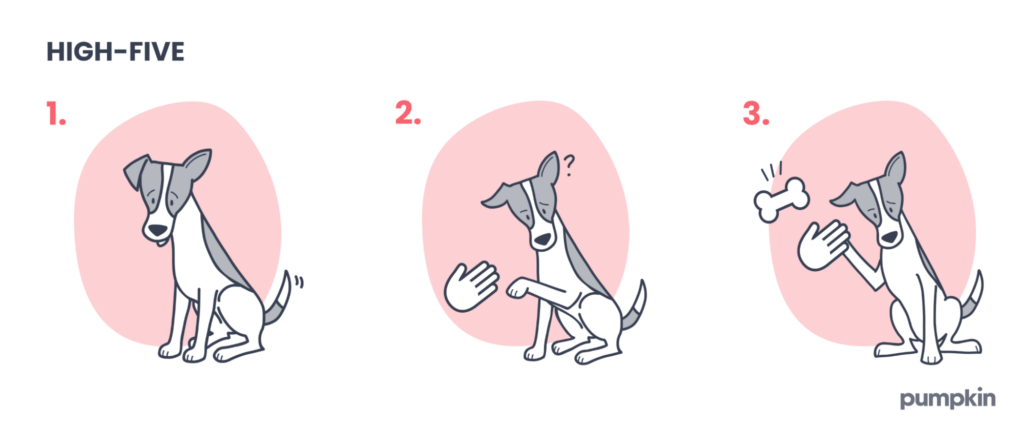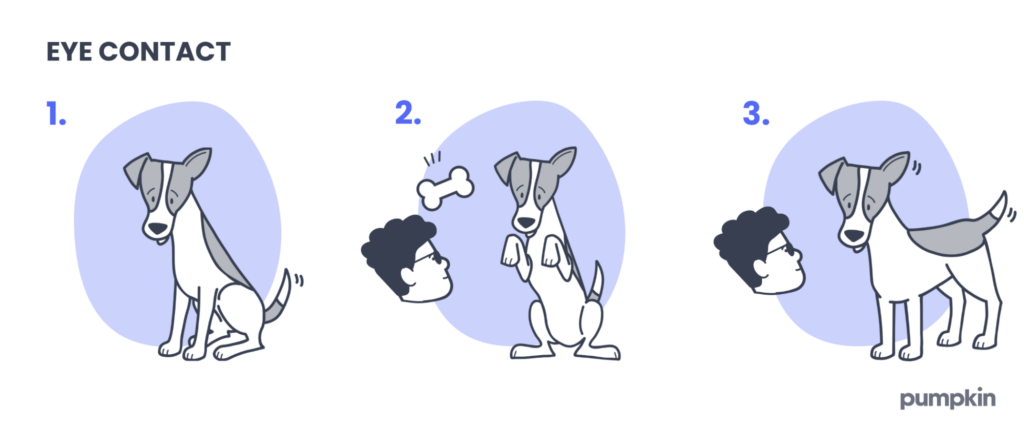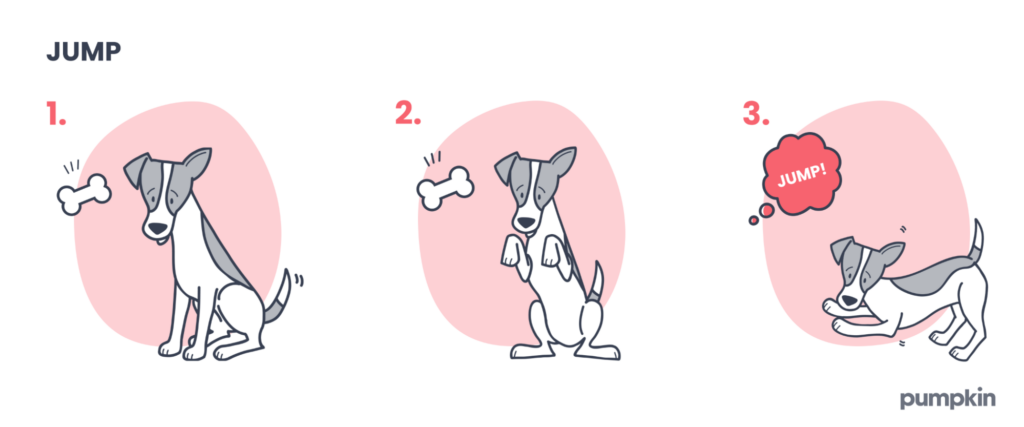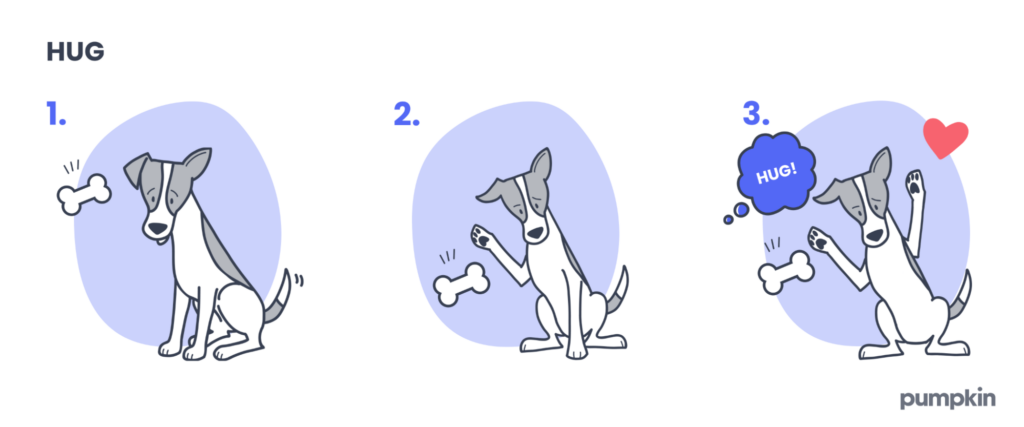Key Points
- Start by teaching your dog basic tricks; move on to advanced tricks once they’ve mastered the simpler tasks.
- Provide positive reinforcement (such as treats or praise) when training so that your dog can connect the new behavior with positive outcomes.
- Be patient with your dog during this process, as good training takes time, repetition, and practice.
Training your dog isn’t just important — it’s key to helping them grow into their best, happiest, and most well-behaved self. Whether you’re raising an energetic pup or teaching an older canine companion new tricks, dogs love routine, and it’s your job to give it to them.
You can start with dog training basics like potty training, leash training, and socialization, but your clever furball is capable of so much more. Dogs are brilliant animals and fiercely loyal companions, ready to impress you with all sorts of commands that keep their minds sharp and their tails wagging.
So, let’s dive into the world of fun tricks to teach your dog, from beginner moves to show-stopping stunts.
Dog tricks 101: How to prepare
Before you set out to train your dog and get them to perform impressive feats, let’s cover some of the most important tips for making these training sessions as effective as possible.
Use positive reinforcement
Positive reinforcement is a process where you reward your dog for desired behavior. It can be as simple as:
- Giving them lots of praise
- Handing them their favorite training treats
- Allowing them to play with their favorite toy
Dogs learn best when they can connect their behavior to their owner’s positive responses, so the more you reward their actions, the better. You can also opt to use a clicker, which helps indicate when a completed trick is successful.
Keep training sessions short
You want to ensure that your training sessions last no longer than five to ten minutes. While dogs can thrive in training sessions and are eager to please, they’ll tire easily if they spend too much time practicing tricks.
Don’t punish your dog during training
Remember that teaching your dog tricks is meant to strengthen your bond and provide stimulation. They should never be punished or given negative reinforcement for their mistakes, as they’ll become confused about your expectations.
Basic tricks to teach your dog
Though there are many tricks to teach your dog, these are very beginner-friendly. Once your pup has these down pat, you can ease into more complicated tricks.
1. Sit
Teaching your dog to sit is the most foundational command. It’s a great trick that allows them to learn discipline and patience, which is handy when they have to wait.

- To get started, you should hold out a small training treat in front of your dog.
- Wait with the treat until they get into a sitting position, then immediately reward them. Then, back away or wait for them to stand.
- Repeat the motion with another treat in your hand, then repeat the last step: once they sit, give them treats and lots of praise.
After a bit of practice, you can ask them to sit without a treat in hand.
2. Stay
Perhaps one of the most useful tricks in the book, teaching your dog to “stay”, will come in handy when you want to prevent them from bolting towards the front door or begging at the dinner table.

- Once your dog is in a sitting position, tell them to “Stay” and hold your hand up to signal a visual cue.
- Have your dog stay put for 10-15 seconds while maintaining eye contact.
- If your dog gets up, don’t reward them. Simply try again until they stay still the entire time.
As always, repetition is key, and it will allow your dog the time to properly internalize the trick’s expectations.
3. Lay down
Teaching your dog to lie down is a basic and useful command that can help build discipline and set the foundation for even cooler tricks down the road.

- Once your dog is sitting down, get their attention with a treat.
- Move the treat in front of their nose towards the ground. It may take a minute for them to understand, but eventually, their nose should follow.
- Slowly guide the treat across the ground towards your body until your pup is lying down.
If your dog immediately stands up, try again until they completely lay flat, then reward them for their amazing work.
4. Shake
Ever seen a dog shake their owner’s hand or “give paw”? Not only is this trick adorable, but it’s also a crowd-pleaser and will make you and your pup the talk of the family.

- Hold out your hand to your dog. They may not know what to do first, but it’s important not to force their paw.
- Instead, allow them to figure it out for themselves, even if it takes time. They’ll likely interact with your hand by sniffing, licking, or nibbling on it.
- Once you get your dog’s paw in your hand, immediately praise them and reward them.
Repeat a few times until they understand the trick, then begin to incorporate verbal cues, such as “Shake” or “Paw.”
With a Pumpkin Dog Insurance plan, 90% cash back on eligible vet bills is an option for everyone. Don’t wait to protect your pup — fetch a free quote today!
5. High-five
Imagine celebrating your team’s touchdown with a high-five from your pup — it’s the ultimate game-day moment. Not only is this trick ridiculously cute, but it’s also a fun way to show off how clever your furball is.

- Similar to the “Shake” trick, “High-five” requires your dog to place their paw on your palm.
- Follow the same steps above, but after every time they give you their paw, lift your hand just a bit higher. That way, they’ll have to reach up, which eventually will lead them to a standing position to properly clap your hand.
- Implement the verbal cue after making sure they know the difference between “shake hands” and “high five.”
Remember to always reward them afterward.
6. Eye contact
Training your pup to maintain eye contact can be a helpful skill for strengthening communication, enhancing your bond, and improving your dog’s focus.

- Hold a treat near your eyes and call their name to get their attention.
- As soon as they glance at your eyes, say “Yes” or click your clicker and reward them with a treat.
- Build the duration by letting them hold eye contact before treating them.
- Finally, you can add a cue, such as saying, “Look at me” or “Focus,” which they’ll learn to connect to the behavior.
With consistency, they’ll learn to lock their eyes with yours whenever they hear the cue.
7. Jump
Another fun and energetic trick is “jumping,” in which your dog leaps into the air with enthusiasm, showing off their agility. Not only is this fun for your dog, but it’s also a great way for them to get rid of excess energy.

- Hold the treat just above their nose and ensure they see and smell it so their full attention is on it.
- Slowly raise the treat higher, just above their head. As the treat moves upward, your dog will naturally start to jump.
- As they start to lift off the ground, say the cue word “Jump” in a clear, upbeat voice.
Afterward, praise them and reward them with a treat. You can repeat the process by lifting the treat higher each time.
Advanced tricks to teach your dog
Now that your dog has mastered the basics, it’s time to ramp it up a little. The following are more advanced dog tricks requiring multiple steps and much more practice. But once they get these down, it’ll be incredibly rewarding.
8. Sit pretty
“Sit pretty” is a trick that starts off with your dog in a regular sitting position, then ends with their front legs raised up. It’s perfect for showing off their balance and charm.

Because not all dogs have the same physique, practicing this trick may take several tries until they’re comfortable and confident.
- First, ask your dog to sit. Then, raise your treat slightly over their head while extending your arm for them to use for support.
- As they rise, they will likely lean on you to situate themselves into the “sit pretty” position, which is when you can reward them.
Try this a couple more times, eventually removing your arm so they can balance on their own. Attach your verbal cue to the trick.
9. Roll over
“Roll over” is the ultimate show-stopper. Your dog starts lying down and then flips onto their back in one smooth motion. While this trick is relatively complicated, it’s impressive and guaranteed to make everyone say, “Aww!”

- Kneel in front of your dog with your treat in hand. Get them to lower themselves into a down position first by waving the treat from their nose to the ground.
- Wait until they get in a downward position, then slowly drag the treat sideways, leading your dog’s head towards their shoulder.
- Reward your dog for that motion and practice it a couple more times. Once your dog is comfortable, start to drag the treat further from their shoulder until they lay on their side.
- Lead the treat to the other side of their torso until they successfully flip over, then provide an ample amount of verbal praise and treats.
Because this is a multi-step trick, it’s recommended that you space it out over a couple of weeks.
10. Back up
“Back up” is a cute trick where your dog takes a few steps back as if making room for you to walk. It’s a practical trick all dogs should know — especially in those tight hallways or small spaces around the house.

- Stand in front of your dog, then take a step forward. Make sure to raise your hand up with your palm facing their direction.
- If your dog immediately takes a step back, reward them with a treat. Repeat this step a couple of times, then modify it by staying in place while lifting up your hand.
- This cue should now be familiar to your dog, causing them to back up once.
- Try to repeat this motion to get them to go back a few more steps.
Once they’re able to walk backward, reward them promptly.
11. Play dead
Playing dead is the ultimate dramatic trick where your dog dramatically flops onto their side and stays still as a statue — as if an imaginary bullet has hit them. It’s hilarious, adorable, and sure to get a big laugh every time.

- Like “Roll over,” you’re going to want to place a treat on the ground so that they get into a sideways lying position. If your dog tries to roll over, do not give them the treat and try again from the top.
- To minimize confusion, make sure that the verbal or hand signal for this trick is distinct from “Roll over.”
- In between each attempt, try to have your dog lie down for a few seconds longer before rewarding them with a treat.
This trick may take a while to learn, so be extra patient with your pooch.
12. Hug
One of the most adorable tricks you can teach your pooch is to hug you. With this trick, they’ll place their paws around you or an object, giving you a sweet and cuddly embrace.

- First, start by having them sit in front of you while holding a treat in front of their nose so you can get their attention.
- Slowly move the treat across their chest, just under their neck. As they reach for the treat, their front paws will naturally lift, and you can gently guide them to place their paws around your body or arm as if they’re hugging you.
- Once your dog’s paws are resting around you, say the cue word “Hug” excitedly and lovingly.
After they hug you, remember to reward them immediately and praise them. You can add another cue by saying, “Good hug,” so they know they did well.
Let the training begin
Remember to take breaks when your dog seems tired, reward them with their favorite dog treats, and most importantly, have fun! By practicing these tricks, you’ll be able to forge strong, trusting relationships with your furry companion — and show off a nifty party trick or two.
If your dog doesn’t want to train, no matter what you try, this could indicate behavioral issues. Read more about common dog behavior problems and learn how to address them.
While you’re helping them stay sharp and happy, remember to protect their health with pet insurance. Learn more about how Pumpkin Dog Insurance plans can help you afford the best care in case of unexpected illnesses or accidents in the future.




